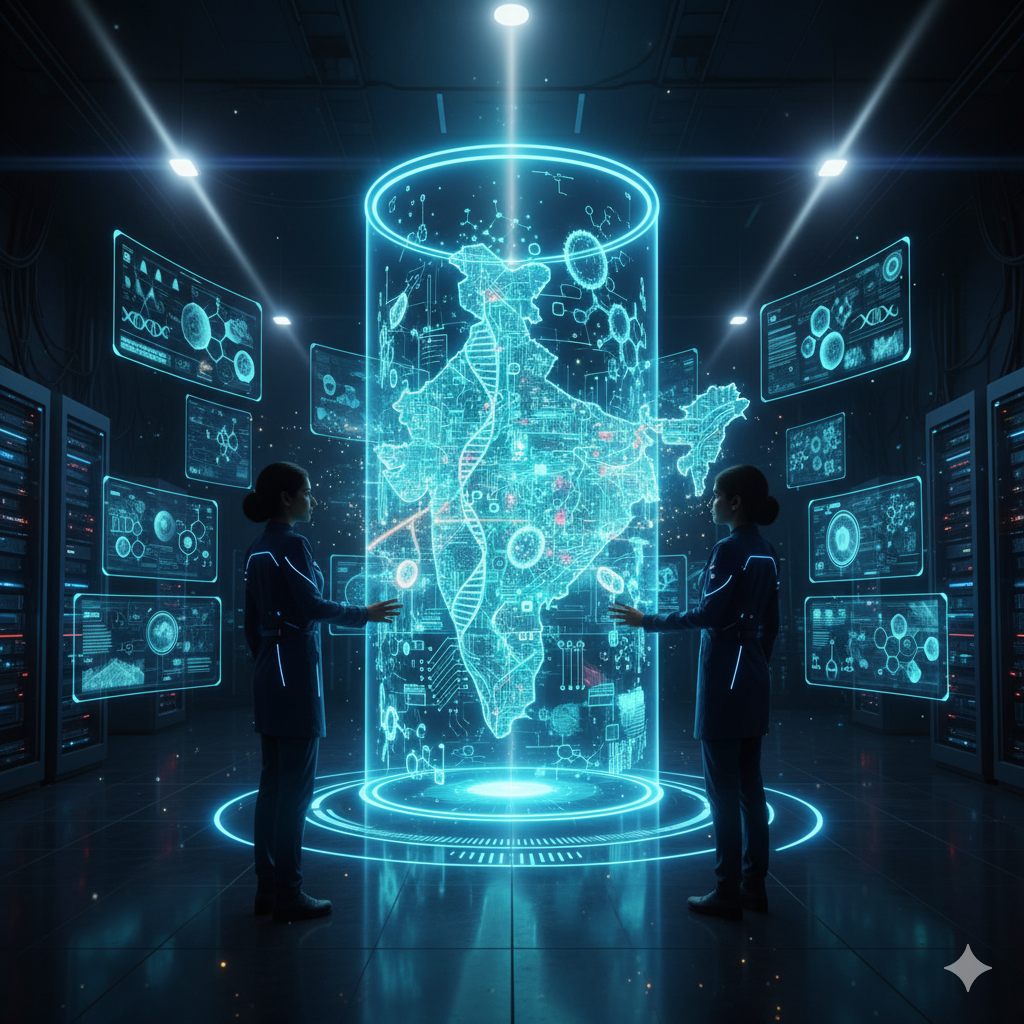The Indian Space Research Organisation (ISRO), established in 1969, has become a cornerstone of India’s technological development and scientific innovation. Originally formed to harness space technology for peaceful purposes, ISRO has grown into a symbol of self-reliance, cost-effective innovation, and technological excellence. Its achievements go beyond launching satellites and space missions; ISRO has played a vital role in advancing numerous technological sectors, including communication, navigation, meteorology, education, defense, and agriculture.
This article explores how ISRO has catalyzed technological progress across India, transforming not only the scientific landscape but also the everyday lives of millions.
I. Laying the Foundation of India’s Space Technology
1. Vision and Philosophy
ISRO was founded under the guidance of Dr. Vikram Sarabhai, who envisioned using space science for national development. Unlike many global space programs that were driven by military or geopolitical motives, India’s space journey began with development goals—bridging the communication gap, improving weather forecasting, and supporting agricultural productivity.
The early years focused on:
- Satellite technology
- Indigenous launch vehicles
- Infrastructure for mission control and data reception
II. Satellite Technology and Applications
1. Communication Revolution: INSAT Series
The Indian National Satellite System (INSAT), operational since the 1980s, revolutionized telecommunications in India.
- Enabled widespread TV broadcasting, especially in rural and remote regions
- Supported tele-education and telemedicine
- Facilitated mobile and telephone connectivity in previously inaccessible regions
- Supported search and rescue operations through satellite alert systems
Today, with satellites like GSAT (Geo-Stationary Satellite), India continues to expand its communication footprint, including broadband connectivity for rural areas via GSAT-6 and GSAT-15.
2. Earth Observation: IRS and Cartosat
India’s Indian Remote Sensing (IRS) program is one of the largest in the world.
- Provides high-resolution data for agriculture, urban planning, forestry, and water resource management
- Cartosat satellites offer precise imagery for infrastructure development, border monitoring, and disaster response
- Bhuvan, ISRO’s own geo-portal, gives public access to satellite imagery, empowering researchers, students, and policymakers
3. Weather and Disaster Management
Satellites like INSAT-3D/3DR, SCATSAT-1, and Megha-Tropiques provide real-time data for:
- Monsoon prediction
- Cyclone tracking
- Flood and drought forecasting
- Forest fire monitoring
These capabilities have significantly reduced human and economic loss during disasters, especially in coastal regions.
III. Navigation and Location Services
1. NAVIC – India’s Indigenous Navigation System
NAVIC (Navigation with Indian Constellation) is India’s regional GPS alternative.
- Offers accurate position information to users in India and surrounding regions
- Supports civil aviation, marine navigation, road transport, and military operations
- Unlike GPS (US), NAVIC is under Indian control, enhancing national security
NAVIC’s adoption in smartphones and other civilian applications is steadily growing, showing India’s ability to create homegrown alternatives to global tech monopolies.
IV. Space Launch Technology and Engineering
1. Indigenous Launch Vehicles
ISRO’s development of launch vehicles like SLV, ASLV, PSLV, and GSLV represents a massive technological leap.
- PSLV (Polar Satellite Launch Vehicle):
- Known for high reliability and cost-effectiveness
- Used to launch domestic and foreign satellites
- Set a world record by launching 104 satellites in one mission (2017)
- Known for high reliability and cost-effectiveness
- GSLV Mk III (now LVM3):
- India’s most powerful launcher
- Used for Chandrayaan-2 and Gaganyaan missions
- Supports heavier payloads and deep space missions
- India’s most powerful launcher
2. Reusable Launch Technology
ISRO is developing the Reusable Launch Vehicle (RLV) to lower launch costs and increase mission frequency. RLV-TD prototypes have been successfully tested, marking a step toward spaceplane-like systems.
V. Interplanetary Missions and Scientific Innovation
1. Chandrayaan and Lunar Science
- Chandrayaan-1 (2008) discovered water molecules on the Moon’s surface.
- Chandrayaan-2 (2019) delivered a successful orbiter for lunar mapping.
- Chandrayaan-3 (2023) achieved a soft landing near the lunar south pole, placing India among top global space players.
2. Mangalyaan – The Mars Orbiter Mission (MOM)
- Launched in 2013, entered Mars orbit in 2014.
- First country to reach Mars in its maiden attempt.
- Demonstrated cost-effective deep-space engineering (~$74 million).
- Provided insights into Martian atmosphere and surface features.
3. Aditya-L1 – India’s Solar Mission
- Launched in 2023 to study the Sun’s outer atmosphere (corona), solar winds, and storms.
- Positioned at Lagrange Point 1, 1.5 million km from Earth.
- Will improve our understanding of space weather and its impact on Earth-based technology.
VI. Contributions to Education and Scientific Awareness
1. Space Education and Public Engagement
ISRO supports scientific education through:
- Young Scientist Programme (YUVIKA) for school students
- Collaborations with universities for space research
- Organizing public exhibitions, planetarium shows, and educational outreach
2. Data for Research and Innovation
ISRO openly shares Earth observation data through platforms like:
- Bhuvan (geospatial data access)
- MOSDAC (weather and climate data)
- VEDAS (visualization and monitoring)
This promotes academic and industrial research, enhancing India’s knowledge economy.
VII. Defense and Strategic Applications
1. Satellite Surveillance and Reconnaissance
- RISAT (Radar Imaging Satellite) and EMISAT (Electronic Intelligence) enhance border security and defense planning.
- Satellite imagery aids in monitoring troop movement, infrastructure development, and strategic installations.
2. Anti-Satellite (ASAT) Capability
In 2019, India demonstrated its ASAT capabilities through Mission Shakti, successfully destroying a low Earth orbit satellite. This marked India’s entry into the elite club of nations with space-based defense tech (USA, Russia, China, India).
3. Cybersecurity and Encryption
ISRO is working on quantum communication and secure satellite communication technologies to counter threats in an increasingly digitized defense environment.
VIII. Commercial and Industrial Impact
1. Foreign Satellite Launch Services
ISRO has launched over 400 foreign satellites for more than 35 countries.
- The Antrix Corporation and NewSpace India Limited (NSIL) handle commercial deals.
- Clients include the US, UK, Canada, Germany, Singapore, and others.
- Offers cost-effective and reliable launch options for small and medium payloads.
2. Promotion of Space Startups
India’s space ecosystem is growing rapidly:
- Private players like Skyroot Aerospace, Agnikul Cosmos, Bellatrix Aerospace, and Pixxel are developing their own rockets, satellites, and AI-based space solutions.
- ISRO provides technical support, launch infrastructure, and testing facilities.
- IN-SPACe (Indian National Space Promotion and Authorization Centre) is the regulatory body guiding private participation.
IX. Contribution to Agricultural and Environmental Technologies
1. Agricultural Monitoring
- Satellites help assess crop health, soil moisture, land use, and irrigation patterns.
- Programs like FASAL, CHAMAN, and National Agricultural Drought Assessment provide timely insights to farmers and policymakers.
2. Forestry and Water Resource Management
- Satellite data helps monitor forest cover, illegal deforestation, and biodiversity.
- Tools like WRIS (Water Resource Information System) aid in efficient water distribution, watershed management, and dam monitoring.
3. Climate Change Monitoring
ISRO satellites provide long-term datasets for:
- Sea-level rise
- Glacial retreat
- Deforestation impact
- Urban heat mapping
This supports India’s climate policy formulation and international reporting.
X. Future Technologies and Global Outlook
1. Human Spaceflight: Gaganyaan
- Aims to send Indian astronauts (Gagannauts) into space on an indigenous spacecraft.
- Includes testing of life support systems, crew module, and abort systems.
- Scheduled for 2025, marking India’s entry into human spaceflight capabilities.
2. Deep Space Missions
- Shukrayaan-1: Proposed Venus mission to study its atmosphere and surface.
- Future missions to asteroids and planetary moons are under study.
3. Artificial Intelligence and Robotics
- Use of AI for satellite image interpretation, mission planning, and rover autonomy.
- Vyommitra, a semi-humanoid robot, is being developed for spaceflight support and data collection.
Conclusion
ISRO’s contributions to India’s technological advancements are vast and multidimensional. From laying the groundwork for communication and navigation to enabling planetary exploration and national security, ISRO has emerged as a catalyst for scientific progress and innovation. Its ability to combine low-cost innovation with high-impact outcomes has not only benefited India but also inspired other developing nations.
As India aspires to become a global technology hub, ISRO will continue to play a pivotal role—bridging the gap between science and society, promoting space-based solutions, and expanding India’s influence in the final frontier.
Summary Points
- Satellites: Enabled communication, education, disaster response, agriculture, and climate monitoring.
- Navigation: NAVIC system improves strategic autonomy and precision.
- Launch Capabilities: Indigenous PSLV, GSLV, and upcoming RLV.
- Deep Space Missions: Chandrayaan, Mangalyaan, Aditya-L1, Gaganyaan.
- Defense Role: Surveillance, ASAT, and encrypted communication.
- Private Sector Boost: Skyroot, Agnikul, and IN-SPACe driving commercial growth.
- Societal Impact: Telemedicine, rural connectivity, environmental monitoring.




